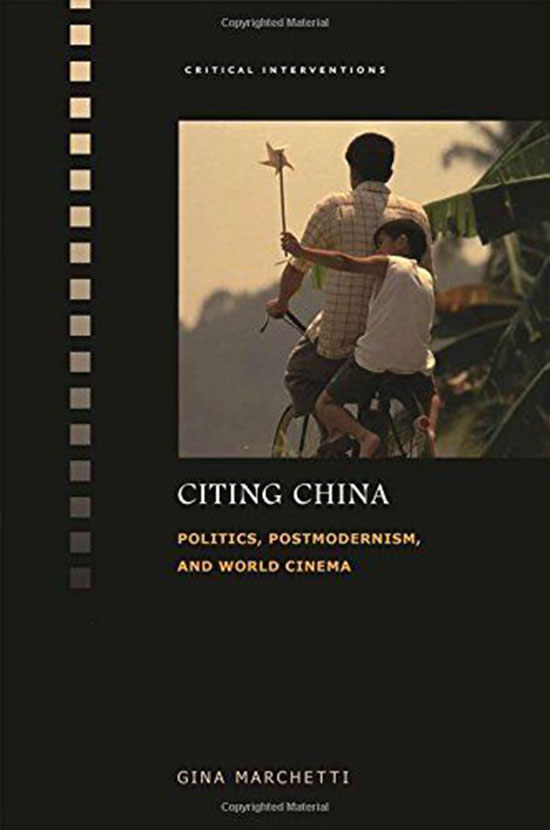Project Description
Author: Gina Marchetti
Title: Citing China: Politics, Postmodernism, and World Cinema
University of Hawaii Press (March 31, 2018)
Citing China explores the role film plays in creating a common ground for the exchange of political and aesthetic ideas between China and the rest of the world. It does so by examining the depiction of China in contemporary film, looking at how global filmmakers “cite” China on screen. Author Gina Marchetti’s aim is not to point to how China continues to function as a metaphor or allusion that has little to do with the geopolitical actualities of contemporary China. Rather, she highlights China’s position within global film culture, examining how cinematic quotations link current films to past political movements and unresolved social issues in a continuing multidirectional conversation. Marchetti covers a wide range of cinematic encounters across the China-West divide. She looks closely at specific movements in world film history and at key films that have influenced the way “China” is depicted in global cinema today, from popular entertainment to international art cinema, the DV revolution, video activism, and the emergence of “festival films.” Marchetti first considers contemporary Chinese-language cinema (Edward Yang, Hou Hsiao-Hsien); she then turns to Italian Neorealism and its importance to the Chinese Sixth Generation (Jia Zhangke) and the French New Wave’s ripple effect on filmmakers associated with the Hong Kong New Wave and Taiwan New Cinema (Ann Hui, Evans Chan). As the People’s Republic of China has gained increased global economic clout, filmmakers draw on Euro-American formulae (Bruce Lee, Clara Law) to attract new viewers and define cinematic pleasures for new audiences on the other side of the earth. The book concludes with a consideration of the role film festivals, women filmmakers, and emerging audiences play in the new world of global cinema. Citing China offers a framework for examining cinematic influence as a dynamic and multidirectional process. It is carefully researched, theoretically sophisticated, and animated by detailed and historically nuanced studies of individual films, making clear just how much a part of global film culture today’s China is. The book makes important contributions to debates in transnational film studies, postmodern versus modernist aesthetics and politics, and Asian as well as European art cinema.

